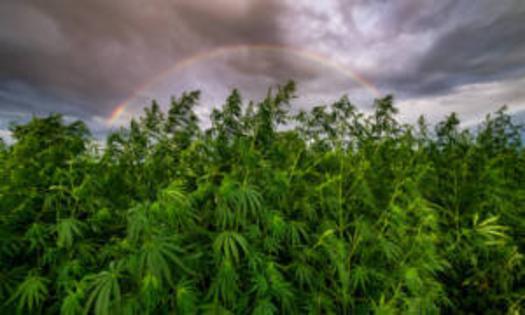Cannabis Grows and Water Usage
Published in Cannabis Daily
Outdoor cannabis grows are productive, energy effective and very popular…but how much water do they use?
As marijuana cultivation expands across the United States and globally, concerns are emerging about its environmental footprint—particularly about cannabis grows and water usage. A commonly raised question is whether cannabis affects water tables as much as notoriously water-intensive crops like avocados, almonds, or rice. The answer depends on several factors, including growing methods, location, and water regulation practices. Cannabis is a thirsty crop. Outdoor cannabis plants require an estimated 5 to 6 gallons of water per plant per day during peak growing season. In comparison, an avocado tree typically consumes 40 to 50 gallons per day, but it also produces a larger volume of fruit over a longer growing period. On a per-acre basis, cannabis can use slightly less or more water than avocados depending on planting density and climate. However, the water impact of cannabis becomes more problematic in regions where it’s grown illegally or without proper oversight. n California, for example, both avocados and cannabis are cultivated in drought-prone areas, but cannabis farms—especially unpermitted ones—are often located in ecologically sensitive headwaters or forested areas. These illicit operations may divert streams, destroy native vegetation, and withdraw water from small creeks that feed local water tables. Unlike avocados, which are typically grown on large farms with regulated irrigation systems, cannabis operations may lack water rights or infrastructure to capture and store water sustainably. Legal, regulated cannabis farms generally use more efficient water systems such as drip irrigation, water recycling, and rainwater capture, which can significantly reduce environmental strain. In fact, some indoor cannabis grow operations use less water per gram of product than outdoor farms due to tighter control of inputs. However, indoor cultivation shifts the environmental burden to energy use and carbon emissions rather than water withdrawal. The effect of cannabis on water tables also depends on its cultivation scale. In California alone, illegal grows have been linked to declining streamflows and drying wells in rural areas. Conversely, avocados, almonds, and other crops are grown on tens of thousands of acres and, in total volume, have a much larger water footprint. For example, almonds in California consume over 1.1 trillion gallons of water annually, a figure far beyond cannabis. While cannabis can have a significant localized impact on water resources—especially when grown without regulation—it does not yet rival the large-scale water consumption of avocados or almonds in total volume. Still, its environmental footprint deserves careful oversight. Encouraging legal cultivation, sustainable irrigation, and environmental compliance will be key to minimizing cannabis’ effect on water tables as the industry continues to grow.
The Fresh Toast is a daily lifestyle platform with a side of cannabis. For more information, visit www.thefreshtoast.com.
























Comments